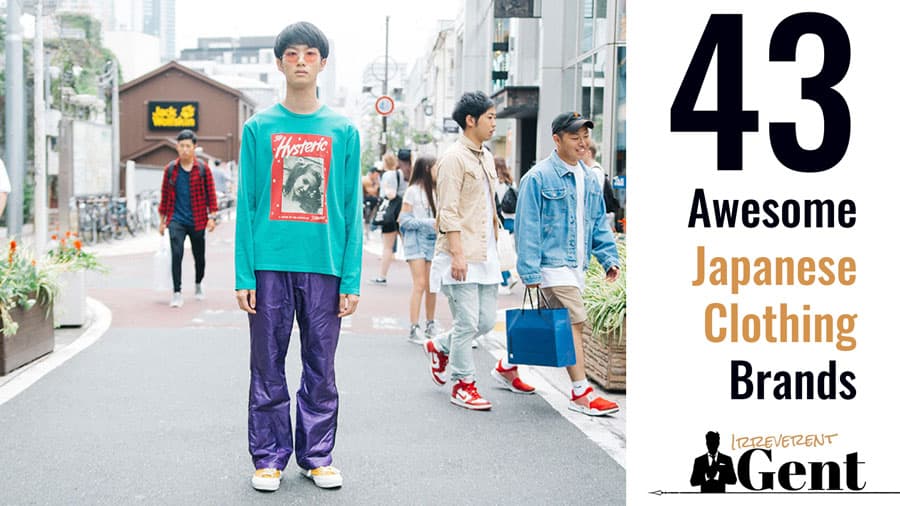How Sustainable Fabric Trends Are Shaping Branded Clothing Collections
How Sustainable Fabric Trends Are Shaping Branded Clothing Collections
Blog Article
The Value of Sustainable Clothes: How It Impacts the Atmosphere and Your Storage room
Lasting clothes is increasingly acknowledged for its important function in reducing the ecological influence of the quick apparel industry. By concentrating on green materials and honest production methods, it resolves pressing ecological worries. This shift not just benefits the world but additionally influences customer options, leading to an extra thoughtful technique to closet management. Understanding these characteristics elevates important concerns regarding fashion's future and personal obligation in shaping it.
The Ecological Impact of Fast Style

Benefits of Sustainable Products
Lasting materials offer significant benefits, specifically via eco-friendly fabric selections that decrease environmental harm. These products likewise demonstrate resilience and long life, decreasing the need for constant replacements. Consequently, they contribute to an extra sustainable fashion market and promote responsible customer habits.
Eco-Friendly Fabric Selections
While the style market has actually long been connected with rapid fads and ecological injury, the surge of environment-friendly fabric selections presents a transformative chance. Lasting products such as organic cotton, hemp, and Tencel have gotten appeal as a result of their lower environmental impact. These textiles are typically created without unsafe chemicals and need much less water, minimizing their carbon footprint - Branded Clothing. In addition, many eco-friendly textiles are naturally degradable, adding to a circular economic situation by minimizing waste. Selecting lasting materials not just sustains environmentally liable techniques but likewise advertises much healthier environments. As consumers come to be more knowledgeable about their acquiring power, the need for green materials motivates brands to introduce and take on more sustainable production techniques, inevitably profiting the earth and future generations
Longevity and Longevity Benefits
Numerous consumers are progressively identifying the durability and long life advantages of lasting products in their clothing choices. Unlike conventional fabrics, sustainable materials such as organic cotton, hemp, and recycled polyester are engineered to stand up to damage, causing garments that last much longer. This lowered regularity of replacement not only saves customers cash in time but also lessens waste created by quick fashion. Furthermore, sustainable clothes usually uses environment-friendly production methods that enhance fabric toughness, adding to a decrease in the overall carbon footprint. By buying durable garments, consumers can cultivate an extra lasting closet while taking pleasure in premium pieces that keep their visual and performance gradually. Subsequently, longevity and longevity stand as essential benefits of selecting lasting materials.
Reducing Waste With Sustainable Practices
Minimizing waste in the apparel industry can be accomplished through cutting-edge practices such as upcycling and repurposing products. Additionally, adopting minimal wardrobe methods encourages customers to prioritize top quality over quantity, inevitably lowering clothing consumption. With each other, these approaches add considerably to a more sustainable clothing design.
Upcycling and Repurposing Materials
Upcycling and repurposing products have arised as innovative methods in the apparel industry, changing thrown out textiles into beneficial new products. This technique not only lessens waste yet also motivates creative thinking and individuality in garments layout. By taking old garments and products, developers can create distinct items that mirror individual style while reducing the demand for new resources. Furthermore, upcycling often requires less energy and water compared to traditional manufacturing procedures, significantly lowering the environmental footprint of style. As consumers come to be a lot more familiar with sustainability, the appeal of upcycled clothing continues to rise, promoting a circular economic climate. Inevitably, these techniques add to an extra lasting future, where fashion prioritizes environmental health over rapid manufacturing and usage.

Minimal Closet Strategies
As people increasingly look for to lessen their environmental impact, adopting minimal closet techniques has acquired traction as a reliable strategy to sustainable fashion. These strategies emphasize top quality over amount, encouraging customers to curate a smaller collection of functional, sturdy clothes. By concentrating on ageless items that can be combined and matched, individuals can reduce the regularity of purchases and ultimately lower waste.Additionally, minimalism promotes conscious usage, urging buyers to review the honest and environmental implications of their selections. This technique not only fosters a more lasting way of life but also streamlines everyday decision-making concerning clothing. As individuals embrace minimal principles, they add to a fashion society that values sustainability and accountable consumerism, ultimately leading to an extra eco-conscious society.
The Function of Honest Labor in Lasting Fashion
While several consumers are progressively familiar with the environmental effects of their clothes selections, the importance of honest labor practices in sustainable style can not be overlooked. Moral labor encompasses fair incomes, safe working conditions, and regard for employees' rights, developing the foundation of responsible fashion manufacturing. Brand names that prioritize ethical labor not just boost neighborhoods but also set a requirement for accountability in the industry.Moreover, the combination of honest techniques promotes transparency, allowing customers to make enlightened choices regarding their acquisitions. This practice contrasts greatly with rapid fashion's unscrupulous labor versions, which commonly focus on earnings over people. By supporting companies dedicated to honest labor, customers add to a system that values human self-respect along with environmental sustainability. As a result, ethical labor is not just an add-on; it is necessary to the broader objective of sustainable fashion, making sure that the quest for eco-friendliness does not come with the expenditure of civils rights.
The Impact of Lasting Clothing on Carbon Emissions
Lasting garments has the potential to greatly lower carbon discharges related to the style market. link Traditional garment manufacturing contributes significantly to greenhouse gas emissions, largely because of energy-intensive manufacturing processes and the usage of non-renewable resources. In comparison, sustainable style focuses on green products, such as organic cotton or recycled fibers, which usually need much less energy to produce.Moreover, lasting brands have a tendency to adopt extra efficient production practices, decreasing waste and lowering general emissions. By prioritizing durability and classic style, lasting clothing motivates customers to purchase much less regularly, further minimizing the carbon footprint connected with overconsumption.Additionally, many sustainable brand names are committed to transparency in their supply chains, allowing customers to make educated selections that align with their values. Ultimately, moving in the direction of lasting clothes can cause a considerable reduction in carbon exhausts, contributing to a healthier planet and an extra lasting future for the fashion business.
Supporting Neighborhood Economies With Sustainable Choices
The change toward lasting garments not only addresses ecological concerns yet additionally considerably benefits neighborhood economic climates. By choosing lasting fashion, customers frequently support regional artisans and small companies, improving neighborhood strength. These business normally run on a smaller sized range, prioritizing craftsmanship and honest methods over mass production.Investing in locally made lasting clothes fosters work creation and stimulates economic development within communities. As consumers end up being a lot more familiar with the environmental impact of their acquisitions, they progressively seek products that reflect their worths. This demand encourages neighborhood makers to embrace sustainable techniques, adding to a round economy.Moreover, supporting local businesses reduces transport discharges, aligning with eco-conscious customer habits. The interconnectedness of sustainable clothes and regional economic climates underscores the important duty that private choices play in advertising both financial and environmental health and wellness. By fostering these neighborhood links, communities can thrive while additionally working towards an extra sustainable future.
Changing Your Storage Room: Tips for a Lasting Wardrobe
As people look for to reduce their ecological impact, changing a wardrobe into a sustainable closet ends up being a vital step. One reliable technique is to review existing clothes, maintaining only products that are put on routinely and that line up with sustainability objectives. Prioritizing top quality over quantity is crucial; buying sturdy pieces from eco-friendly brand names can significantly decrease waste.Additionally, integrating used items can rejuvenate a closet while reducing environmental damages. Organizing clothes swaps with close friends or donating unused items can additionally advertise sustainability.When shopping, individuals need to look for materials that are natural, recycled, or eco-friendly, and prevent quick style retailers - Branded Clothing. Finally, exercising mindful usage by attentively thinking about each acquisition can contribute to a much more sustainable way of life. By applying these pointers, one can develop a closet that mirrors individual design while sustaining environmental stewardship
Often Asked Concerns
How Can I Identify Sustainable Clothing Brands?
To identify lasting apparel brand names, one must investigate materials used, look for accreditations like Fair Trade, and examine the brand name's openness regarding their manufacturing procedures, labor techniques, and environmental impact, guaranteeing eco-friendly and moral techniques are focused on.
What Are the Prices Connected With Sustainable Style?
The expenses connected with lasting style can vary significantly. Higher manufacturing costs, ethical sourcing, and eco-friendly products usually cause enhanced market prices, which might hinder some customers while attracting environmentally aware buyers.
Can Sustainable Apparel Be Trendy and stylish?
Lasting garments can certainly be fashionable and stylish. Developers progressively focus on ingenious materials and honest production approaches, verifying that style and sustainability can exist together. Customers now have varied alternatives that blend visual appeals with ecological consciousness.
Just How Does Washing Clothing Affect Their Sustainability?
Cleaning clothes considerably influences sustainability by consuming water and energy, contributing to air pollution, and creating microplastic release. Regular washing can break down materials, reducing their life expectancy and increasing the demand for replacements, eventually worsening ecological concerns.
What Is the Life Expectancy of Lasting Clothes Compared to Quick Style?
The life-span of sustainable clothing generally goes beyond that of rapid fashion products, usually enduring numerous years due to top quality materials and workmanship. On the other hand, quick fashion garments may break down swiftly, necessitating even more constant substitutes. Lasting clothes is progressively acknowledged for its critical role in decreasing the ecological impact of the quick the original source style sector. While many customers are increasingly aware of the ecological repercussions of their garments selections, the value of moral labor techniques in sustainable fashion can not be ignored. Branded Clothing. Sustainable clothing has the potential to greatly lower carbon exhausts connected with the fashion sector. In comparison, sustainable fashion focuses on environmentally friendly products, such as natural cotton or recycled fibers, which often call for much less power to produce.Moreover, sustainable brand names tend to adopt more reliable production methods, decreasing waste and decreasing overall emissions. By prioritizing durability and classic design, lasting garments encourages consumers to buy less frequently, have a peek at these guys additional decreasing the carbon impact associated with overconsumption.Additionally, several sustainable brand names are committed to openness in their supply chains, making it possible for customers to make informed selections that line up with their values
Report this page